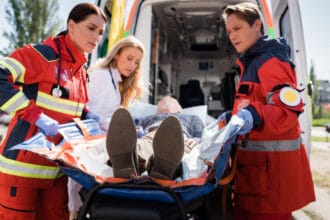Hospitalized patients are generally eager to go home – to sleep in their own beds and eat their own food – but for medical professionals, that transitional period can be stressful and terrifying. After all, when patients are admitted, you have complete control over their care and environment. At home, though, all of that goes out the window and many patients quickly enter a downward spiral. In fact, one in five Medicare recipients are readmitted within 30 days of hospital discharge. This is bad for patient health and harmful to your hospital’s reputation.
In order to minimize patient readmissions, medical professionals need to develop a standard protocol for transition planning. Proper transition planning allows patients and their caregivers to fully understand their condition, care plan before going home, and make sure the home environment is appropriate.
Parroting The Plan
The most important and first step in the transition planning process is ensuring that patients understand the care plan, and the simplest way to do this is by using a basic “teach back” strategy. Used across many different aspects of medicine, a “teach back” simply involves having patients and caregivers explain the care plan in their own words. It’s one thing for patients to directly repeat a plan or read over a handout, but unless they can describe the process using unique language, they don’t really understand what they need to do.
Assess The Space
While it’s vital that patients understand their care plan, that’s far from enough if their home isn’t a safe environment for recovery. Before patients head home, then, it’s important to review what constitutes a safe space for medically fragile patients.
There are a number of different approaches one can use to assess home safety. The American Occupational Therapy Association (AOTA), for example, recommends Rebuilding Together’s Safe At Home checklist or similar adaptations. Other options include the Cougar Home Safety Checklist or the In-Home Occupational Performance Evaluation (I-HOPE) checklist.
Regardless of which checklist your hospital uses, the overall aim of such lists is to ensure that patients won’t be injured or otherwise harmed at home, but unless you actually visit the space, it can be tough to confirm compliance. It can help to send home a copy of the checklist and even encourage patients to work with in-home consultants. As home healthcare providers My Family Home Health Care, explains, in-home nurses and therapists are highly knowledgeable about patient safety. Such providers can ensure that medications are stored and administered properly, slippery throw rugs are removed, and there are no trip hazards like wires where they could injure clients.
Emphasize Interventions
When a patient is discharged from the hospital, they aren’t completely healed; their case simply isn’t acute anymore. In order to keep them on track with their recovery, then, they need to continue treatment and therapies and attend follow-up appointments. Unfortunately, not all patients are compliant with this process.
One way that healthcare providers are helping patients maintain continuity of care after discharge is by employing community care programs, including programs for aging in place and paramedical programs that can evaluate high-risk patients in-home. The Center for Medicaid and Medicare Innovation (CMMI), for example, recently concluded a demonstration project known as CAPABLE –Community Aging in Place: Advancing Better Living for Elders.
The CAPABLE Program assists with safety-based home improvements like installing grab rails, chair lifts, and improved lighting, and brings nursing and occupational therapy services to patients at home. This helped reduce emergency services use, improve health, and increase users’ ability to perform activities of daily living, such that they can safely live independently. This demonstration program makes a powerful argument for the increased use of scaled in-home nursing for senior and high-risk patients, especially in the weeks after hospitalization.
A Complex Process
Post-hospitalization transitions are a key area of medical intervention right now, and hospital systems and non-profits across the country are working hard to improve the process. What they’ve learned is that, though insurance companies may penalize hospitals for readmissions, the underlying issues rarely have to do with medical care. Instead, patients usually get worse at home because they don’t have access to medications, in-home nursing care, or even to nutritious foods or transportation to follow-up care. Simply put, patients can know exactly what they need to do to stay well, but are unable to follow through because of personal constraints.
There are countless resources for planning post-hospital transition care, but these three factors – using teach-backs for reviewing care, assessing home safety, and using outreach programs – should form the backbone of your hospital’s discharge process.
With this information, you make it possible for your patients to go home and stay home, minimizing stress and expenses, and emphasizing the path to wellness.










